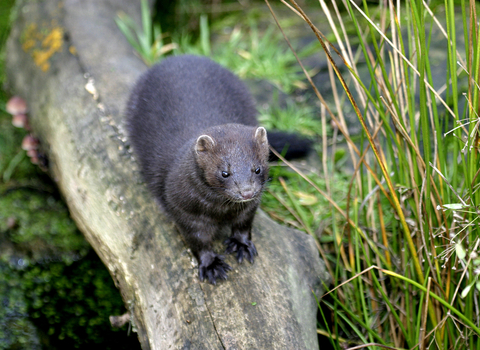
©Wildstock
American mink
Escaped or intentionally freed from fur farms in the 1960s, the American mink is now well established in the UK. Its carnivorous nature is a threat to our native water vole and seabird populations.
Enw gwyddonol
Neovison visonPryd i'w gweld
January to DecemberTop facts
Categori
Stats
Length (excluding tail): around 30-43 cmTail: around 18 cm
Weight: around 0.5-1.5 kg
Average lifespan: 10-12 years
(Mink are extremely variable in size, with averages varying across different regions. Males are larger and heavier than females.)
Invasive, non-native species.
Habitats
Ynghylch
The American mink (or just 'mink') escaped from fur farms in the 1950s and 1960s, and now breeds across most of the country. It is an active predator, feeding on anything it is big enough to catch, including ground-nesting seabirds and our native water voles, which are now under threat of extinction. Mink are good swimmers and females are small enough to enter the water-line burrows of water voles and take their young.Mink are fiercely territorial; their dens are close to the water and the females have one litter of four to six kittens a year. Mink are much more likely to be seen than the shy and secretive otter.
